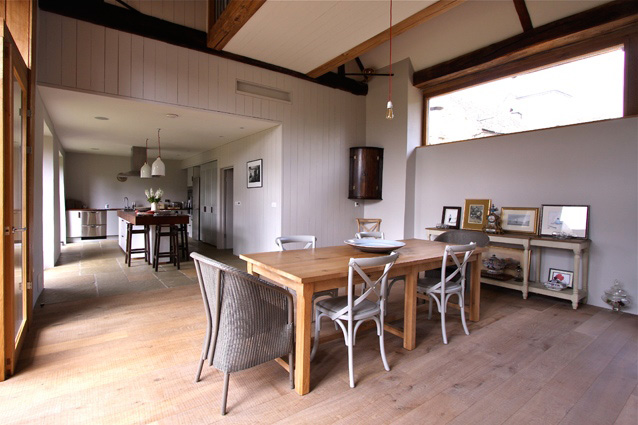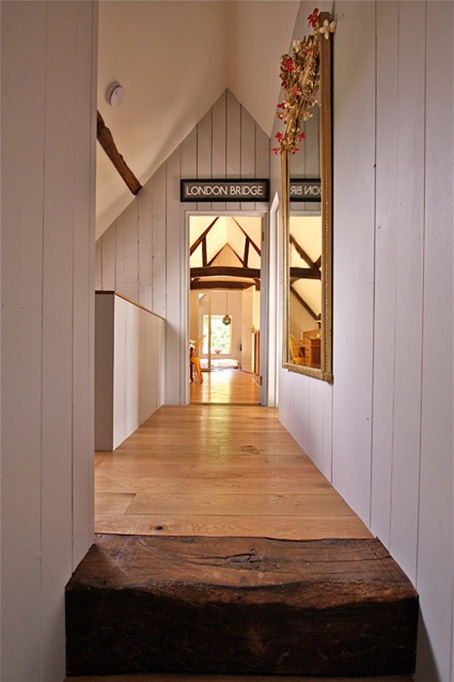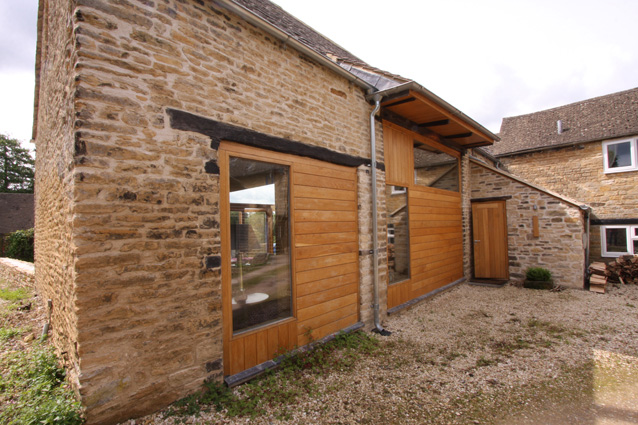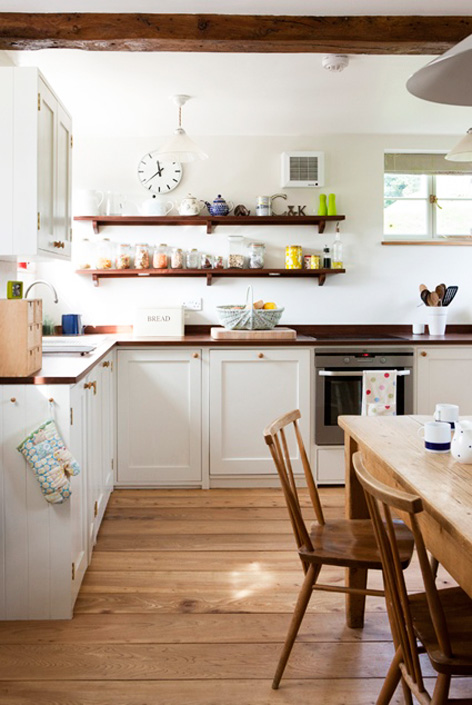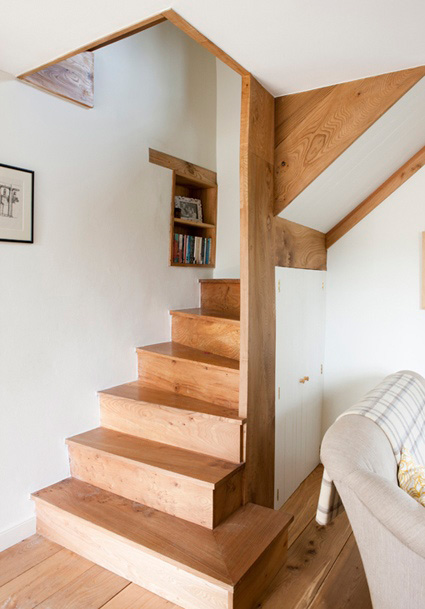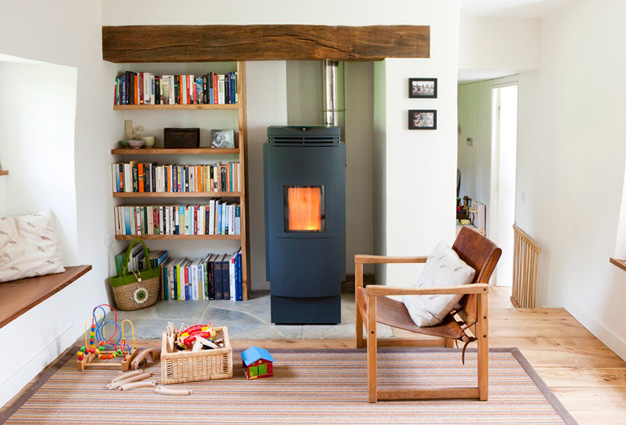Charlie Luxton: High octane enthusiast for low energy living
Architectural designer and TV presenter Charlie Luxton is optimistic that self-build is the future for the next generation. And he's all for thinking well and truly outside the box.

Sustainable designer Charlie Luxton does a lot of work for Channel 4 and is currently presenting Building The Dream on More 4. Luxton and his family live in a superbly insulated MDF-free cottage in rural Oxfordshire that's not in the least ostentatious.
If you saw Charlie Luxton's earlier TV series, World's Weirdest Homes, you may have been inspired to see that 'self build' doesn't have to mean bricks and mortar in a neat box shape.
The while his work does sometimes lead him to get involved in the world of luxury houses, what motivates him in his work isn't grandeur, but encouraging more of us to get involved in self-build.
Not large, lavish architectural extravaganzas, but the sort of self-builds that your kids may well be doing when they grow up, ie self-builds on small budgets, which could get us out of the housing crisis we are heading for.
'Self-build is potentially a huge driver of change in this country'
Luxton says people who self-build build better, and he asserts that self-build will become increasingly relevant to us. Presently, only around five per cent of builds in England are self-builds, but changes to planning rules and guidance announced this year could see council-owned land being made available directly to individuals prepared to build their own home. Luxton cites Cherwell council in Oxfordshire, which is looking to make 2,000 self-build sites available, and which has also been praised by the Government for its action in encouraging and supporting self-build communities.
'People don't want to live in Noddy boxes any more,' says Luxton, who shudders at the thought of estates full of over-priced, tiny, dull, identical little houses that pass for architecture in this country. 'I think it's in everyone's interest to build their own house. You will stimulate local communities and the economic benefits will be felt by lots of local people, rather than profits going into the pockets of the big developers and lucky landowners. I think if councils make land available to people so they can actually afford to build their own homes, than self-build is potentially a huge driver of change in this country.'
Put your money into insulation
'I think architects can't not be interested in reducing CO2 emissions. I mean, 27 per cent of emissions in the UK are as a result of energy use in our homes. Draughty homes waste heat, and we need to stop the waste of resources by making things better. Sustainable design is good design... and it saves you money in the long run.'
Luxton, like many designers, architects and interior designers, is hugely focused on insulation, a topic his profession can talk about for hours. And while we lay folk may nod off after a few minutes on the subject and be keen to move on to the pretty side of houses....furniture, fabrics, and lighting... we should all realise that we're contributing to unnecessary CO2 emissions if we don't insulate. Forget location, location, location, it's now insulation, insultation, insulation.
When it comes to interiors, Luxton is down to earth. His home isn't full of glossy designer furniture, rather he's clearly happy surrounded by wood. The family's refurbished Oxfordshire cottage has Scottish elm flooring, and a painted wooden kitchen with reclaimed teak worktops that were once laboratory counters. Forget fancy composite or solid surface materials, there's nothing better than wood....sustainably produced, of course...and his and his wife Kate's home is testament to a love of what's local and what's natural. 'In my work we use no tropical hardwoods. I like Scottish elm and northern European woods.'
His advice when it comes to kitchens is to forgo the big kitchen companies, whether Poggenpohl or Magnet, and find a local joiner who can build you one out of plywood, with reclaimed wooden worktops. 'Get something designed for you that will last for years.' Bathrooms, he says, should have water-waving showers and taps. 'I think if you want to be green in the bathroom, the issues are around reducing water useage.'
Luxton is concerned about internal air quality and for that reason avoids materials that can off-gas, such as MDF or particle boards. 'And I do care a lot about paints and go for ones with the lowest VOC content, or mineral or clay paints which breathe. There are thousands of chemicals in products in our homes that have not been tested properly and we should be more concerned about the air we breathe indoors.'
A rough rule of thumb for Luxton, when it comes to materials, is not to have ones you wouldn't want your supper served on. 'So would I eat food served on a piece of wood, or stone, or glass? well, yes. But MDF no.'
Luxton doesn't like the nanny state, but does think people need more information to help them make sustainable choices related to how they refurbish their homes. 'Designers, for example, are paid to advise their clients. So if the client wants granite, then the designer needs to make it their business to supply granite that is produced in an ethical way. And they need to advise about what lasts and what doesn't. People need to understand about false economies, which is a problem with DIY.
He says he does proselytize when appropriate. 'For example, when I worked on DIY:SOS, I would strongly urge in favour of recycling and using eco-friendly materials. While none of us likes being told what to do, people do need to know the facts. There is a problem with cheap stuff, it doesn't last, and if it can't be recycled, then it end up in landfill.'
Luxton says it's great that more of us are getting into recycling and upcycling and is glad fewer of us would consider throwing out granny's old Ercol chairs these days. 'If something has been intrinsically well-made, and it's still in good, why rip it out or throw it away?
